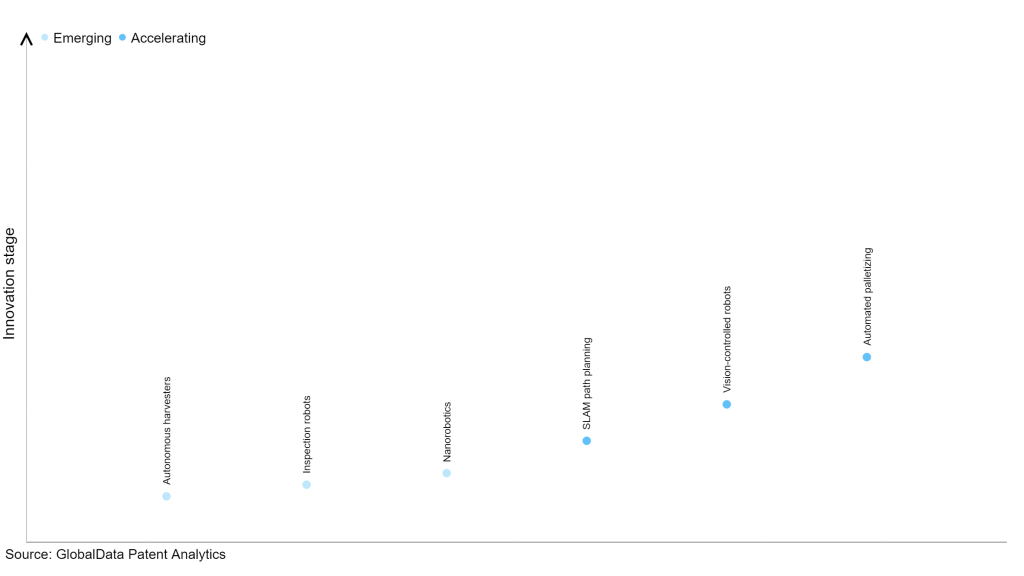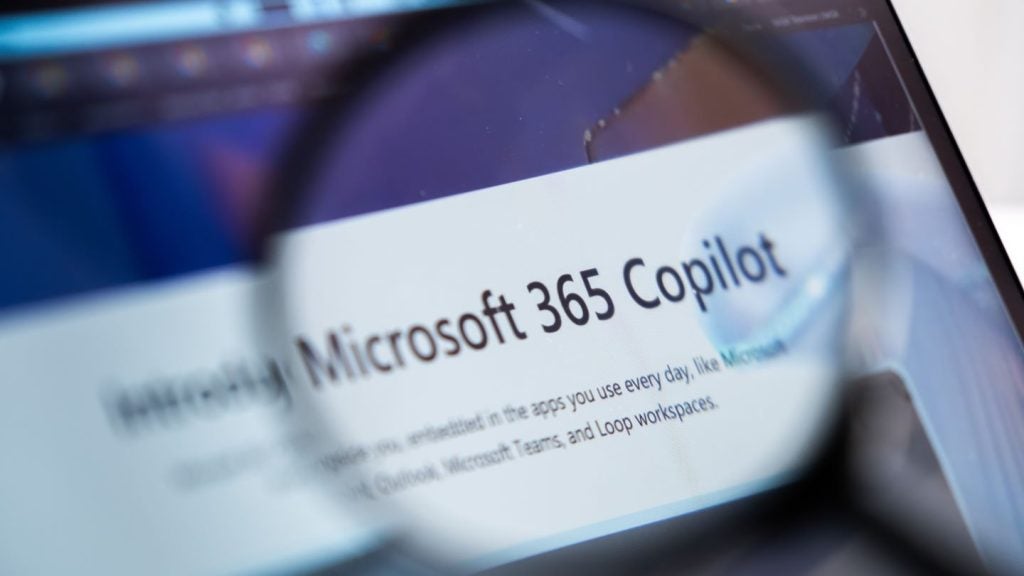The technology industry continues to be a hotbed of patent innovation. Activity is driven by robotics, advanced sensors, machine learning, and artificial intelligence (AI), and growing importance of technologies such as actuators, force sensors, control systems, and virtual and augmented reality (AR/VR) to create robots that possess superior capabilities and versatility. Force feedback robots use haptic interfaces such as force-feedback gloves or exoskeletons, enabling users to interact and receive tactile sensations from the robot. In the last three years alone, there have been over 1.5 million patents filed and granted in the technology industry, according to GlobalData’s report on Robotics in technology: force feedback robots. Buy the report here.
However, not all innovations are equal and nor do they follow a constant upward trend. Instead, their evolution takes the form of an S-shaped curve that reflects their typical lifecycle from early emergence to accelerating adoption, before finally stabilizing and reaching maturity.
Identifying where a particular innovation is on this journey, especially those that are in the emerging and accelerating stages, is essential for understanding their current level of adoption and the likely future trajectory and impact they will have.
185+ innovations will shape the technology industry
According to GlobalData’s Technology Foresights, which plots the S-curve for the technology industry using innovation intensity models built on over 1.6 million patents, there are 185+ innovation areas that will shape the future of the industry.
Within the emerging innovation stage, autonomous harvesters, inspection robots and nanorobotics are disruptive technologies that are in the early stages of application and should be tracked closely. SLAM path planning, vision-controlled robots, and automated palletizing are some of the accelerating innovation areas, where adoption has been steadily increasing.
Innovation S-curve for robotics in the technology industry

Force feedback robots is a key innovation area in robotics
Force feedback robots refer to robotic systems capable of delivering tactile sensations to users with the use of actuators to generate forces or vibrations that can be perceived. This technology enhances immersion in applications like virtual reality gaming and provides haptic feedback in industrial robotic systems, enabling users to experience realistic touch sensations and improve interaction and engagement.
GlobalData’s analysis also uncovers the companies at the forefront of each innovation area and assesses the potential reach and impact of their patenting activity across different applications and geographies. According to GlobalData, there are 1,160+ companies, spanning technology vendors, established technology companies, and up-and-coming start-ups engaged in the development and application of force feedback robots.
Key players in force feedback robots – a disruptive innovation in the technology industry
‘Application diversity’ measures the number of applications identified for each patent. It broadly splits companies into either ‘niche’ or ‘diversified’ innovators.
‘Geographic reach’ refers to the number of countries each patent is registered in. It reflects the breadth of geographic application intended, ranging from ‘global’ to ‘local’.
Patent volumes related to force feedback robots
Source: GlobalData Patent Analytics
Fanuc is the leading patent filer in force feedback robots, followed by Seiko Epson, and LG.
Other prominent patent filers in the space include Samsung Group, Kawasaki Heavy Industries and Sony Group.
By geographic reach, Teleflex leads the pack, followed by Nissan Motor and SoftBank Group. In terms of application diversity, Kawasaki Heavy Industries holds the top position, followed by Fanuc and LG.
Force feedback robots enhance human-robot interaction by providing tactile sensations and haptic feedback. This capability enables more immersive experiences in virtual reality applications, improves teleoperation and training in industrial settings, and enhances user engagement and realism in various fields, ranging from gaming to medical simulations.
To further understand how robotics is disrupting the technology industry, access GlobalData’s latest thematic research report on Robotics.
Data Insights
From

The gold standard of business intelligence.
Blending expert knowledge with cutting-edge technology, GlobalData’s unrivalled proprietary data will enable you to decode what’s happening in your market. You can make better informed decisions and gain a future-proof advantage over your competitors.







